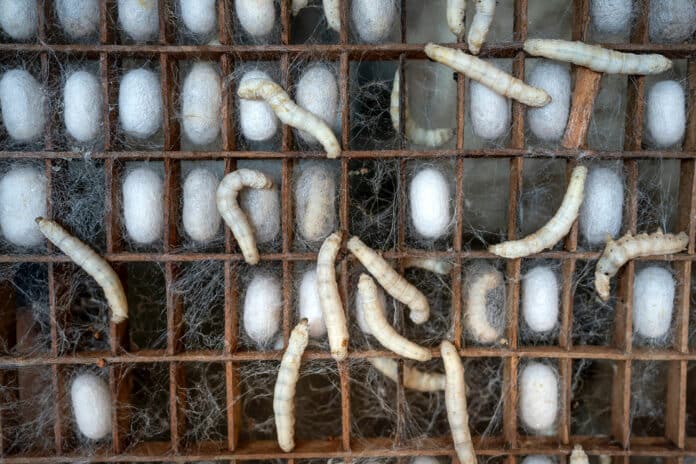Animals create high-performance fibers at natural ambient conditions via a unique spinning process. In contrast, the nanofiber spinning technologies developed by human beings are usually complicated or slow, or they produce clumpy fibers.
Now, inspired by adhesion-based silkworm spinning, researchers from China’s Sichuan University have developed a faster and simpler nanofiber spinning method that could produce continuous, uniform filaments in a quick and easy way with minimal equipment.
To create the threads, the researchers poked an array of tiny microneedles into a piece of foam soaked with a polyethylene oxide solution, then pulled the needles away in a process called micro adhesion-guided (MAG) spinning. As the needles are withdrawn, each one pulls a thin thread of the polymer out of the sponge. These threads dry quickly, which can then be cut and used.
Different types of filaments were created by mimicking the way silkworms move their heads when producing their silk fibers: Pulling straight back resulted in ordered, oriented fibers, swaying or vibrating created cross-linked fibers; and turning the needle array produced a twisted, “all-in-one” fiber. Additionally, these threads didn’t wad together, which could occur in previously developed methods.
A more simplified version of MAG spinning didn’t require microneedles. Researchers simply soaked two pieces of foam with the polymer solution and pulled them apart, easily and instantly spinning threads between them. Using this strategy, they pulled the strands and placed them directly on a person’s skin to create an instant, custom bandage. An antibiotic that had been added to the polymer allowed the bandage to inhibit the growth of harmful bacteria.
The researchers say that this work could open up new possibilities for future biomedical applications of nanofibers, such as wound dressing.
Journal reference:
- Zhuxi Ni, Zhiwei Zhu, Yuan Ji, Xuewei He, Xuewei Fu, Wei Yang, and Yu Wang. Biomimetic Microadhesion Guided Instant Spinning. ACS’ Nano Letters, 2022; DOI: 10.1021/acs.nanolett.2c03297
